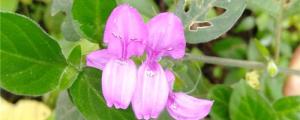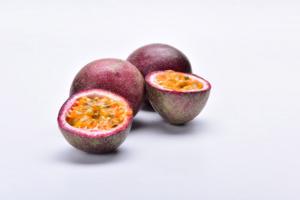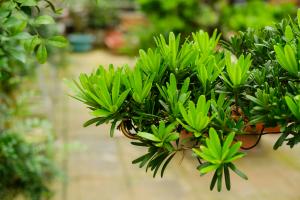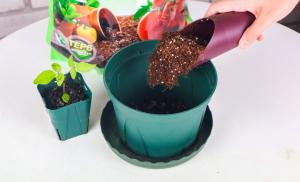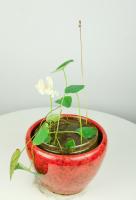1. Camellia falling bud
Reason 1: move position
When camellia is about to blossom, people will put it in a place convenient for viewing. However, the light intensity and time of the new location are different from the original, which will disrupt the growth rhythm of Camellia and lead to the drop of flower buds
Solution:
Try not to move your position when Camellia blossoms. Even if you want to move the position, you can't have too much difference from the previous environment

Reason 2: improper watering
Avoid ponding in Camellia. If the pot soil is too wet, the root cannot be sucked normally, which will cause falling flowers and buds. During the flowering period of Camellia, the basin soil should be kept wet and dry. If it is too dry, the fleshy fibrous roots will dehydrate and die; If it is too wet, the fibrous roots will suffocate and rot due to ponding. When plants cannot get water supply, they will bud first and then fall leaves
Solution:
If the basin soil is too dry, it should be watered a small amount first to gradually wet the basin soil, and then watered with water. Otherwise, the root tip will lose water, and the sudden flood will not adapt to it, which is easy to cause bud falling. In winter, it is necessary to do about 70% of the work before watering, and warm water should be poured at noon on sunny days

Reason 3: pH discomfort
Camellia likes acid. Sandy soil with soil pH value of 5 to 6.5 is more suitable. The soil is too acidic or alkaline. Clayey soil, saline alkali soil and calcareous soil will make Camellia grow poorly and some trace elements cannot be absorbed. Lack of phosphorus, iron, sulfur and other nutrient elements in the soil will also form the phenomenon of lack of green and bud falling
Solution:
0.2% ferrous sulfate solution shall be sprayed every week

Reason 4: temperature discomfort
Pay attention to adjusting the temperature. When the temperature drops to close to 0 ℃, move the camellia to the light in the room, and cover the curtain at night for insulation. It is advisable to keep 3 ℃ to 5 ℃ during overwintering. If it exceeds 16 ℃, it will germinate in advance and cause fallen leaves and buds. Below 0 ℃, flower buds will be frozen
Solution:
The temperature in the early flowering stage shall not be lower than 5 ℃ to 7 ℃, and the temperature in the flowering stage shall be 10 ℃ to 15 ℃, up to 20 ℃. When the temperature is above 2 ℃ in winter, Camellia can keep its flower buds. Camellia should avoid too large temperature difference. Sometimes it is high temperature and sometimes it is low temperature, and all the flower buds will fall off

Cause 5: poor ventilation
In winter, if camellia is placed indoors for a long time, poor ventilation, dirty air or room temperature exceeding 20 ℃, it will also cause buds and fallen leaves
Solution:
If the family environment is muggy, you can open the window properly in the warm noon, which will help the growth of Camellia

Reason 6: too many buds
Too many camellia flower buds are bound to disperse nutrients, resulting in flower buds falling off due to insufficient nutrition
Solution:
Before and after August, when the flower buds are the size of soybeans, they should be sparse in time. Only one well-developed flower bud should be reserved for a branch. Especially on plants with weak growth, they must be sparse in time

Reason 7: improper fertilization
Thin fertilizer shall be applied frequently, and raw fertilizer and thick fertilizer shall not be applied
Solution:
From early spring to before flowering, nitrogen and phosphorus mixed liquid fertilizer can be applied once or twice to prevent bud falling, but nitrogen fertilizer should not be too much. Sufficient nutrition for flowering should be stored in autumn, and flowers can flourish and colorful when flowering
From September to October, thin and high phosphorus fertilizer, such as chicken manure, shall be applied every month to achieve the purpose of strengthening buds. Stop fertilizer in November and avoid winter
When fertilizing in the sleeping period, it is easy to drop buds even if thin fertilizer is applied

2. Claw bud crab drop
Reason 1: cold current invasion
In winter, the rootstock in northern China stops growing when it is cold. At this time, most of the flower buds of the full plant will fall off. The bud falling of crab claw orchid using trigonous arrow as rootstock is more serious
Solution:
After the end of autumn, we must pay attention to cold prevention. It is best to move indoors in advance and put it in a sunny place for cultivation.

Reason 2: sudden cooling or large temperature difference between day and night
Crab claw orchid likes to be warm. If the temperature suddenly drops below 10 degrees, buds will fall
Solution:
In case of sudden cooling and warming, indoor warming shall be done in time. You can put a plastic bag on the crab claw orchid, which can keep warm. Remember to tie a few more holes for ventilation. Avoid suddenly moving from the low-temperature balcony into the high-temperature room with heating

Reason 3: improper watering
Watering too much is easy to accumulate water, which is more likely to cause rotten roots of crab claw orchid! The water is too little, and the crab claw can not absorb enough water. When the flower bud is falling, it is very easy to cause the flower bud to fall
Solution:
When the crab claw is in bud, it must be watered after the basin soil is dry. Do not pour water continuously, otherwise it is easy to cause bud falling. However, watering should not be too little. Too dry basin soil is also easy to cause bud falling
Reason 4: insufficient fertilization
The crab claw orchid fails to apply fertilizer in time before and after budding, and the nutrition is insufficient, which is also easy to cause bud falling

Solution:
Thin fertilizer, frequent application and more phosphorus and potassium fertilizer can promote flowering

5、 Move the flowerpot freely
During flowering, the flowerpots are transported randomly, resulting in broken stems and falling flowers and buds
Solution:
Put the plant in a sunny place, and always use a special pot to make the plant receive light evenly. Don't move the flowerpot casually, take care of your hands

6、 watering too much
In the early stage of flower bud, if you water too much, the flower bud is also easy to fall off
Solution:
Keep the basin soil moist. Spray water to the plants often during the bud stage, but do not accumulate water~
3. Liger Begonia falling bud
Reason 1: the air is too dry
If the air is too dry, lig Begonia can't absorb enough water from the air, it will begin to fall buds gradually
Solution:
Spray around liger begonia with the same water as the room temperature to increase the ambient air humidity, or use an air humidifier to increase the indoor humidity

Reason 2: poor ventilation
The long-term placing of Rieger Begonia indoors will cause the falling buds of Rieger Begonia due to the dirty air
Solution:
Open the window every day and ventilate for 1 ~ 2 hours

Reason 3: the temperature is too low
The flower bud of Rieger Begonia is not cold resistant. Once it is frozen, it is very easy to fall off
Solution:
Put liger Begonia indoors. Don't suddenly let liger Begonia freeze. Give liger Begonia a stable and warm environment

Reason 4: too much watering
Watering is too much, and the water forms ponding in the flower pot. In the long run, lig Begonia is easy to rot. once the root rot, the bud fall is inevitable
Solution:
Wait until the surface of the basin soil is completely dry before watering. Water thoroughly

4. Phalaenopsis falling bud
Reason 1: large temperature difference between day and night leads to cold fall
Due to sudden changes in the environment, such as condensed water and cold air, the plant does not adapt to the environment, resulting in flower bud loss
Solution:
Try to avoid changing the place of Phalaenopsis, and try to put Phalaenopsis indoors to reduce the temperature difference between day and night

Reason 2: Pest
For example, mites, the flower buds that are about to open suddenly become dehydrated, and the color is dark red. When the situation is serious, all buds fall! When this happens, flower friends can carefully observe whether there are extremely small milky white or brown insects inside the flower bud
Solution:
Kill with special insecticides

Reason 3: root damage
The root system is not full due to improper production such as watering and fertilization. It is also possible that the root system is in a state of hypoxia for a long time and the supply of nutrients is insufficient, resulting in short flowering period or bud falling
Solution:
Loosen the soil for the flowerpot so that the roots can breathe fresh air

Reason 4: poor ventilation in Greenhouse
The air is dirty, which affects the respiration of Phalaenopsis, and if it is serious, it will cause bud falling
Solution:
It is necessary to exchange indoor air with outdoor fresh air to provide enough fresh carbon dioxide for Phalaenopsis. In a certain space, the more carbon dioxide, the longer the flowers bloom

Reason 5: the temperature is high day and night
The daytime temperature is above 29 ℃ and the night temperature is above 20 ℃, which is the so-called "strong urging". High day and night temperature will accelerate plant metabolism. If combined with insufficient light, the flower bud is easy to yellowing, the flowering period is greatly shortened, the petals are dim and lusterless, and the flowers become smaller. Solution:
Appropriately reduce the indoor temperature and increase the light

Reason 6: the soil is too wet
In the flowering period of Phalaenopsis, medium drying is conducive to bright flower color, but too dry medium will lead to deep flower color and small flowers (low air humidity will also lead to small flowers); If the medium is too wet and the oxygen content in the root system is low, it will seriously affect the development of flower buds. The flowers will bloom small and dull or fall off buds
Solution:
When watering, keep the soil slightly moist and pay attention to watering thoroughly without ponding

Reason 7: the relative humidity of the air is too low
This is easy to cause the flower bud to wilt and fall off, and has a great impact on the size and color of flowers. If the relative humidity is low to a certain extent, the pollen grains of flowers will fall off naturally and the flowers will wilt
Solution:
Sprinkle water around Phalaenopsis, or use air humidifier to increase humidity

5. Jasmine falling bud
Reason 1: insufficient light
Jasmine is a positive light loving plant, and its growth and development need sufficient light. If the planting place or the place where potted flowers are placed is too shady and the illumination time is too short, it will inevitably lead to the overgrowth of branches and leaves and affect the formation and differentiation of flower buds
Solution:
Put the jasmine in a place with plenty of light

Reason 2: matrix discomfort
Jasmine likes slightly acidic soil and should be planted on yellow mud soil rich in humus with pH value of 6.0-6.5. If the planting soil or the prepared substrate is alkaline, the plant growth and development will be affected, and the buds will begin to fall and will not bloom
Solution:
Pour a little vinegar, or spray the jasmine with ferrous sulfate~

Reason 3: watering is unscientific
This is the main reason for the bud falling and early senescence of jasmine. Watering too often and the soil is too wet will lead to the basin soil in a state of water saturation for a long time, lack of oxygen supply, and the root system will rot or mildew due to poor breathing. Too little watering, too dry soil and long-term water shortage of plants will cause flowers and trees to wilt due to water imbalance
Solution:
Water pouring must be done without drying or pouring, and the pouring is thorough. If you have confidence in yourself, you can keep the basin soil in a wet state, which is the best

Reason 4: the temperature is too low
The ambient temperature for the growth of jasmine is too low to reach the minimum temperature required for jasmine bud differentiation and bud development, and jasmine will naturally fall buds
Solution:
Put the jasmine indoors, or raise the temperature around the jasmine, or cover the jasmine with a transparent bag and stab several empty holes for ventilation

Reason 5: too little pruning
If jasmine is not pruned for a long time, it will affect its ventilation and light transmission, too many flower buds and serious nutrient diversion, which will also cause bud falling
Solution:
Bud the jasmine and control the number of flower buds. Trim the weak branches to concentrate the nutrients of jasmine
6. Gardenia falling bud
Reason 1: lack of fertilizer
Gardenia is short of fertilizer, and its growth is weak. Even if it bears flower buds, it is easy to wither and fall off
Solution:
Pay attention to the application of nitrogen fertilizer and iron fertilizer during normal maintenance, and increase the supply of phosphorus and potassium fertilizer after budding. The supply of base fertilizer can be increased during pot turning or buried in the pot soil before new leaves are produced every spring

Reason 2: water shortage
Gardenia likes big water. The flower says, "Jasmine that never dies in drought and gardenia that never dies in waterlogging can't meet the requirements of Gardenia obviously if you water too little."
Solution:
As long as the basin soil does not accumulate water, try to increase the supply of water

Reason 3: low air humidity
Gardenia is a southern flower. It likes a warm and humid climate. If the air humidity is too low, it will cause bud falling
Solution:
Therefore, in the process of Gardenia maintenance, gardenia needs to grow in a high humidity environment. It can be adjusted into a fog with a watering can and often sprayed on the leaf surface

Reason 4: harmful gas impact
Sulfur dioxide and hydrogen sulfide have an impact on the growth of Gardenia. For example, heavy air pollution and high content of such gases will lead to poor growth of gardenia, insufficient nutritional reserves and more flower buds falling off after budding in the coming year
Solution:
Timely remove Gardenia from places with serious air pollution
Why do your flowers always fall
Let's see if there's anything wrong< span>

 how many times do yo...
how many times do yo... how many planted tre...
how many planted tre... how many pine trees ...
how many pine trees ... how many pecan trees...
how many pecan trees... how many plants comp...
how many plants comp... how many plants can ...
how many plants can ... how many plants and ...
how many plants and ... how many pepper plan...
how many pepper plan...